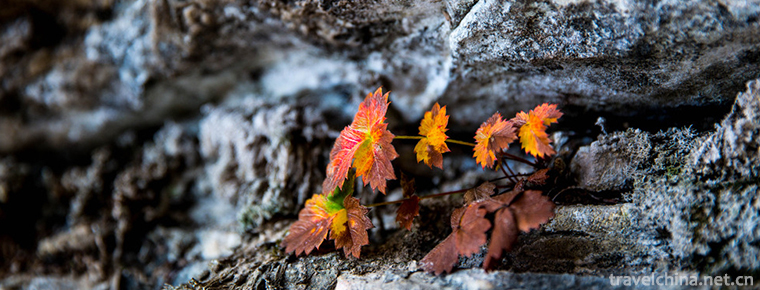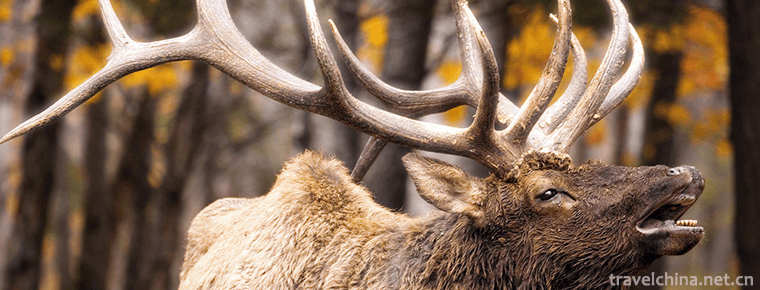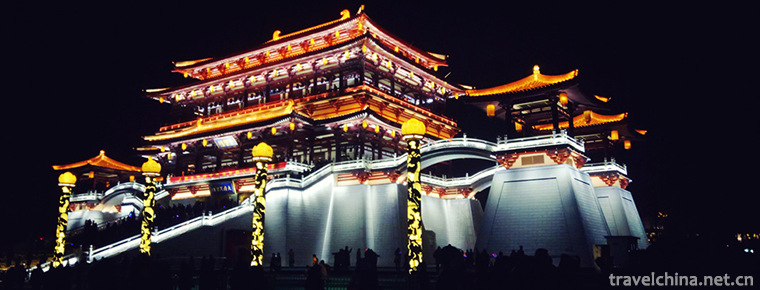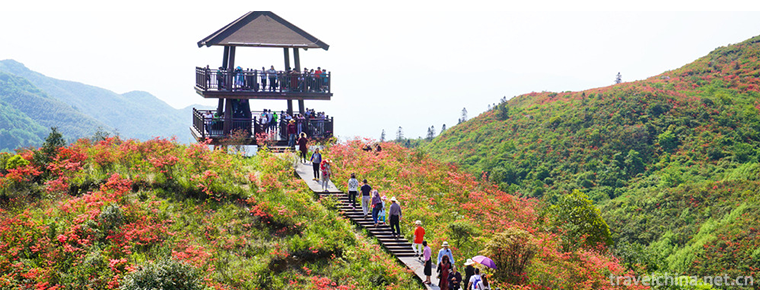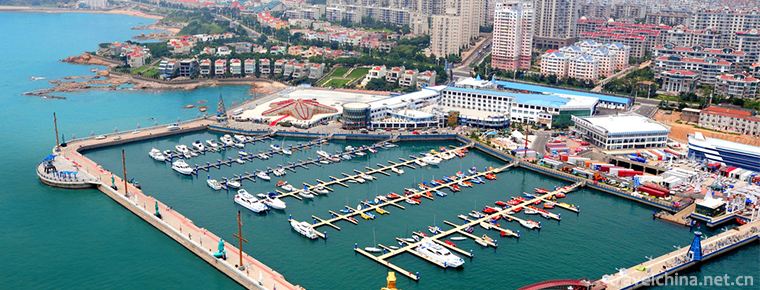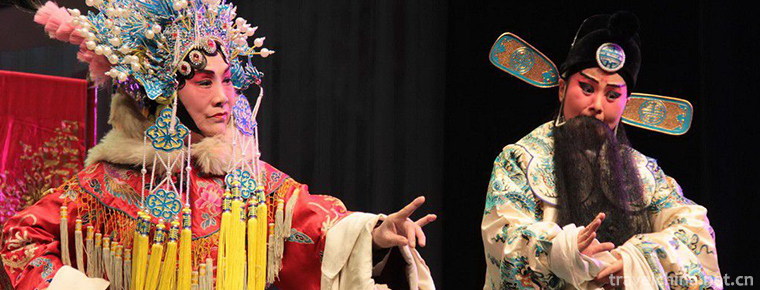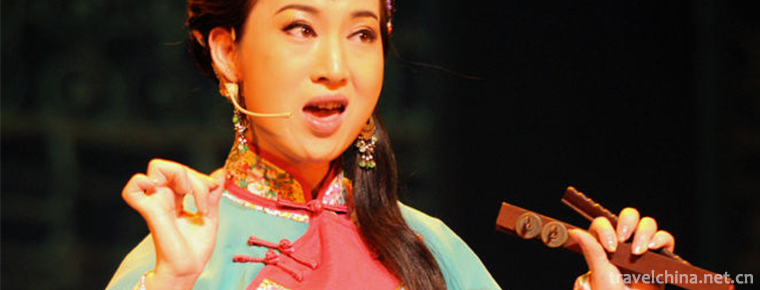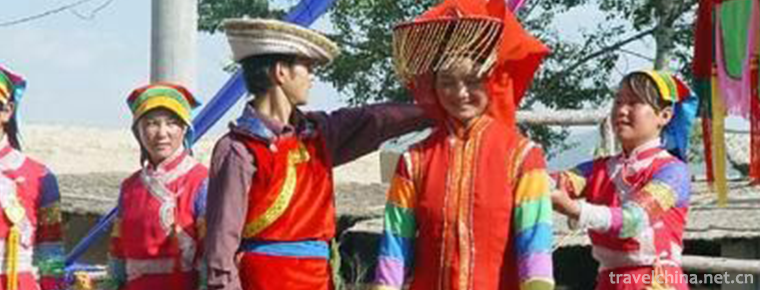Shanghai Botanical Garden
Located in the southwest of Xuhui District, Shanghai Botanical Garden, formerly Longhua Nursery, is a comprehensive botanical garden with plant introduction, domestication and display, horticultural research and popular science education as its main contents. Prepared in 1974, the park was officially built on January 1, 1980, covering 81.86 hectares. The exhibition area consists of 15 special gardens, such as plant evolution area, bonsai garden, herbal garden, exhibition greenhouse, orchid room and green demonstration area.
Shanghai Botanical Garden is a national AAAA tourist attraction. In 1996, Shanghai Botanical Garden was rated as the most favorite outing destination by overseas residents in Shanghai, and in 2000, it was also named the "61" good place in the new millennium.
Historical evolution
Longhua nursery, the predecessor of Shanghai Botanical Garden, was built in 1954 and is famous for its extensive collection of precious bonsai. In 1972, the Shanghai Landscape Management Office began to study the gradual transformation of Longhua nursery into a botanical garden. The following autumn, the design team completed the plan of the botanical garden, which was approved by the Shanghai Revolutionary Committee on March 5, 1974. The renovation began immediately. By the beginning of 1978, the park had begun to take shape and was partially opened on April 1. In 1980, the preparatory group of Shanghai Botanical Garden was abolished and formally named as Shanghai Botanical Garden.
In 1984, the Botanical Garden Phase I Project was completed with a total investment of 10.283 million yuan. After 1981, the Shanghai Municipal People's Government approved that part of the land of the Communist Youth nursery, Longhua Park and Wusong Park should be converted to other uses to compensate for the land adjacent to the botanical garden. Therefore, from 1984, the park began to implement the second phase of the project on the newly added land. By 1987, the total investment was 6.4859 million yuan.
On September 20, 2009, the infrastructure renovation project of Shanghai Botanical Garden was launched. From Nov. 1, 2009 to Jan. 31, 2010, the whole garden of Shanghai Botanical Garden was closed and the reconstruction project was implemented. This project is the first large-scale infrastructure reconstruction after the construction of the park.
Exhibition area introduction
The exhibition and sightseeing
area of Shanghai Botanical Garden is about 600,000 square meters. The
exhibition area did not copy the general botanical garden zoning method, which
not only publicized the scientific knowledge of plants, but also showed the
colorful landscape. The park is divided into four exhibition areas, including
plant evolution, environmental protection, artificial ecology, greening
demonstration, and Huangdaobaomiao Tourist Area. Each district takes special
plants as its main scenery, accompanied by garden architectural sketches, to
form landscape garden with different artistic conception and plant seasonal
characteristics.
Plant Evolution Zone
Located in the middle of the garden, the plant evolution area covers 322,000 square meters, accounting for 62% of the exhibition area. The area is surrounded by rivers on the north, West and South sides. The water in the area is lingering, gathering in the central aquatic plant pond. Around the pond are fern gardens, pine and cypress gardens, Magnolia gardens, peony gardens, azalea gardens, rose gardens, maple gardens, osmanthus gardens and bamboo gardens. The terrain in the area is undulating, and the pavilions and pavilions intersect with the flowers and grasslands.
Plant floor
The Botanical Building is located in the south of the central part of the garden, at the central point of the whole garden, and the main road to the East leads directly to the southeast garden gate. It is a two-storey modern exhibition hall with a mixed structure with an area of 4420 square meters.
On the first floor of the building, there are two pavilions, "Origin of Life" and "Evolution of Plants", which show the origin of life and the evolution of plants from scratch, from low to high with model scenic boxes and sample pictures. On the second floor, there is a science report hall and a plant exhibition hall. The north and west sides of the plant building are composed of tall trees such as camphor, cypress, ginkgo and osmanthus fragrans. There is a pond in the middle of the garden on the South side. The rocky Bank of Taihu Lake is surrounded by yellow fragrance. The southeast is facing the lake and the plant area of environmental protection through the Linping Horizontal Platform.
Aquatic plant pond
The aquatic plant pool is located in the southwest-central part of the plant evolution area, covering an area of 7080 square meters. On the west side of the pool, there is a double-slope open corridor Water Pavilion with reinforced concrete structure, covering an area of 105 square meters. Water lily, lotus, scutellaria, scallion and other aquatic plants are planted in the pond.
Fern Garden
The fern garden is located in the east of the aquatic plant pond and covers an area of 12,000 square meters. There is a double-roof umbrella-shaped shade shed with reinforced concrete structure, covering an area of 430 square meters. Ten species of ferns were planted in the garden, such as Clematis ferns, Pteridopteris ferns, Dryopteris dryopteris, Guanzhong ferns and Haijinsha ferns.
Pine and cypress Garden
Pine and cypress garden is located in the northeast of the aquatic plant pond, covering an area of 83,000 square meters. The hills in the garden are undulating. 54 gymnosperms are planted in groups, such as cedar, bark pine, longbai, Zhongshan cypress, Grosvenor pine, torreya, metasequoia, Mexican larch, Taxodium ascendens and Japanese Cryptomeria.
Magnolia Garden
Magnolia Garden is located between Pine and Cypress Garden and aquatic plant pond, covering an area of 15,000 square meters. There is only a round Pavilion imitating Magnolia flower, reinforced concrete structure, with an area of 28.2 square meters. In the garden, 36 species of Magnoliaceae such as Magnolia magnolia, Magnolia grandiflora, Magnolia huangshan, Magnolia tianmu, Liriodendron chinensis and Michelia lechangensis were planted.
Peony Garden
Peony Garden is located in the north of the aquatic plant pond, covering 36,000 square meters. Peony Pavilion, Peony Hall and Long Corridor built in the garden are all imitative Ming and Qing Dynasty buildings with brick and wood structures, covering 16, 54 and 72.5 square meters respectively.
There are 150 varieties of peony and nearly 10,000 peony plants planted in the garden, including Yao Huang, Wei Zi, the first red, blue and white Kunshan night light, flesh red Hu Hong, as well as purple arbor, Luoyang red, big brown purple, Yulouchun, Wulong Womochi, Chenyu, purple spot and other exquisite products. Every April and May, peony and peony flourish in full swing, and the garden is full of purple and red, making it the best place for peony appreciation in Shanghai. In addition, 86 kinds of trees and shrubs, such as camphor, laurel, duroc, linden, Eucommia ulmoides, red fruit elm and maple incense, were planted in the garden.
azalea garden
The Rhododendron Garden is located in the northwest of the aquatic plant pond, covering 34,000 square meters. More than 5000 rhododendrons are planted in the garden, such as spring cuckoo, summer cuckoo, Mao Bai cuckoo, western cuckoo, Yunjin cuckoo and so on. There is a reinforced concrete Gallery in the south of the garden with an area of 75.4 square meters. There are 2 Kiwifruit species and 7 Kiwifruit plants planted on the gallery side. Northwest of the garden is a persimmon forest. In the northern part of the country, the plants of the family Jasminaceae are mainly planted as scales, wild jasmine, small-leaved white Xinshu, Saishan plum and drooping Pearl flowers.
Rose Garden
Rose Garden is located in the south of the aquatic plant pond, covering 34,000 square meters. There is a corridor-type rose scaffold with reinforced concrete structure in the garden, covering an area of 166.3 square meters. In the garden, 97 species of Rosaceae and Leguminous plants are planted, including Begonia, Cherry Blossom, Plum Blossom, Peach Blossom, Tangli, Hawthorn, Bauhinia, Albizzia, and so on. There are 150 varieties and nearly 10,000 plants in rose alone. Except in the middle of winter, the garden is full of flowers.
Maple orchard
Acer Garden is located in the west of the aquatic plant pond, covering an area of 50,000 square meters. There is a 1480 square metre pool in the east of the garden, and 1300 square metres of lawn are laid around the pool. The red cloud Pavilion on the north side of the pool is made of brick and wood, with four corners high, and green tiles on the cusp. It covers an area of 12.25 square meters.
The garden is dominated by Aceraceae plants, with a total of more than 160 species. Cornaceae plants are planted on the northern hillside of Hongyun Pavilion. Green trees and white flowers are fragrant in spring. Planting crape myrtle, Zhejiang crape myrtle, pomegranate, Luanluan tree, no seed and other trees and shrubs in Lagerstroemia orchard area. The southeastern part of the garden covers an area of 460 square meters. Grapes, thorn grapes, Brome vines and southern snake vines are planted. The red maple area in the East and south of the garden covers an area of 10,000 square meters. Red maple, feather maple, camphor leaf maple, Chinese maple and Louvre maple are planted together with yellow oak, torch tree, Chinese tallow and other Color-leaved trees. The deep autumn forest is full of color and pleasing to the eye.
Osmanthus garden
Guiyuan Garden, located in the south of Rose Garden, covers an area of 19,000 square meters. There is a chrysanthemum gallery with a mixed structure, covering 112 square meters. In the garden, 86 species of plants are planted, such as Osmanthus fragrans, Ligustrum lucidum, Ligustrum globosa, Baila tree, clove, honeysuckle, hyacinth, anthracene, brocade flower, etc.
Bamboo Garden
Located in the east of Guiyuan Garden, Bamboo Garden covers an area of 32,000 square meters. In the garden, there is a bamboo building imitating Dai family, which is built on the stream. It is a steel tube imitating bamboo structure with an area of 64 square meters. Fifty-five kinds of bamboo are planted in the garden, including filial piety bamboo, Gangzhu bamboo, Zaoyuan bamboo, bird-feeding chicken bamboo, Jin-inlaid jade bamboo and Zizhu bamboo.
Artificial Ecological Zone
Artificial ecological zone is located in the southeast of Shanghai Botanical Garden, covering 116,000 square meters. The area is flat with two East-West main roads running across the north and south.
Herb garden
The herbal garden is located in the southeast of the artificial ecological area, covering 20,000 square meters. There are fences around the gate, which is west of the garden gate. Inside the gate is a reinforced concrete statue of Li Shizhen, 2.5 meters high and 0.65 meters high.
In the east of the park, there is a Huangshi rockery and a sandstone rockery with a height of 4 meters, covering an area of 800 square meters and 200 square meters respectively. A bamboo pavilion with an area of 20 square meters and a bamboo scaffold with an area of 55.29 square meters were built in the west of the garden. There is a 98 square meters brick and wood greenhouse in the northwest of the garden, which is used to cultivate cold-resistant medicinal plants. The garden has an area of 840 square meters of pool, in which aquatic medicinal plants are planted. There are more than 600 kinds of herbs planted in the garden.
Mini-Scape Garden
Bonsai Garden is located in the northwest of the artificial ecological area, covering 41,000 square meters. It consists of four areas: preface view, stump bonsai, mountain and stone bonsai and service. There are bamboo pavilions, bamboo corridors, bark pavilions, firewood doors, rattan frames and green tile powder wall exhibition rooms, which constitute the courtyard garden in the south of the Yangtze River.
The Bonsai Museum in the Preface Scenic Area has a brick and wood structure with an area of 115 square meters and a mixed structure with an area of 374 square meters. Both halls are residential buildings in the south of the Yangtze River. They display historical materials on the development of bonsai in China, with emphasis on the introduction of bonsai materials of Shanghai style. The area exhibits such giant bonsai as "Welcome Pine", "Songhe Yannian", "Dead Wood in Spring".
There is a winding mixed structure corridor in the tree stump bonsai scenic area with a total area of 563 square meters. The corridor divides the whole area into several small courtyards, in which more than 1000 basins of various tree stumps and bonsai are displayed. The corridor is open on both sides, with fences under it. There are two relative doors in each courtyard. In rainy or hot days, visitors can enjoy bonsai in the courtyards on both sides in the corridor. Pine and cypress bonsai in Jinsong Courtyard in this area include five needle pine, Arhat pine, black pine, genuine cypress, juniper, money pine, dwarf yew and other tree species. Pine and cypress are simple and elegant. There are plum, elm, wisteria, crabapple, pomegranate, red maple, pyracantha, Elaeagnus hupehensis, Chimonanthus and other tree species in the flower and fruit garden. Small, miniature bonsai exhibition was originally built in a famous Ming and Qing Dynasty imitation building of Sijing Xuan. The Xuan is a mixed structure with an area of 322 square meters. All the stumps planted in small pots are on display in Xuanzhong. Looking from afar, they are like things on the palm of one's hand, but looking at them in the near future, they are like wilderness trees. In 1995, the miniature bonsai was moved to the exhibition greenhouse. The greenhouse is octagonal and has a mixed structure with an area of 443 square meters.
The Waterstone Bonsai Hall in Shanshipen Scenic Area is a Ming and Qing Dynasty-like building with a mixed structure, covering an area of 449 square meters. At the entrance, there are 7 meters long bonsai landscape of Guilin made of axe-splitting stones with magnificent momentum. The museum displays 28 basins of water and stone bonsai made of axe-chopping stone, dacite, stalagmite, stalactite, Taihu stone, pumice, sandstone, sea mother stone, reed pipe stone and other stone materials, which bring all kinds of mountain and river wonders to a close range.
boudoir
The orchid room is located in the south of the bonsai garden, covering an area of 4500 square meters. In 2000, the orchid house was expanded to cover 11150 square meters. It is a large-scale ornamental and orchid-raising place with Chinese classical garden style.
After the expansion, the orchid room is divided into three areas: potted exhibition area, natural exhibition area and courtyard exhibition area. The Orchid Exhibition Greenhouse has also been set up to create the original ecological environment of orchids, as well as the venues for orchid appreciation, orchid chanting and orchid culture propaganda. The orchid room also has the functions of Orchid Exhibition and popularization of orchid culture, so that Chinese orchids can be further promoted. Familiarity and praise.
Chairman Zhu De, the old proletarian revolutionist, wrote the room name for Lanshi and presented 22 pots of orchids, such as Zhu Xinmei and Hutoulan, to the Botanical Garden. The orchid house also collects a large number of famous orchids presented by the famous patriotic general, General Zhang Xueliang, and Japanese friendly personages, totaling more than 300 varieties.
Exhibition Greenhouse
The exhibition greenhouse is located on the east side of the bonsai garden and the west side of the herbal garden. The exhibition greenhouse is a tower-shaped building with large space and many slopes. Its building area is 5000 square meters and its height is 32 meters. Greenhouse interior layout design tropical rain forest and indoor garden two major themes, showing more than 3500 tropical plants around the world.
Environmental Protection Zone
The environmental protection zone is located in the south of the central part of Shanghai Botanical Garden, covering an area of 307,000 square meters. Resistant plants to harmful gases are planted in the area, including oleander, Ailanthus altissima, Siraitia grosvenorii, privet, camphor, poplar, magnolia, mulberry and broussonetia, and cedar, hypericum, oxalis and peach, which can indicate the degree of harmful gases pollution.
A mixed structure environmental protection propaganda gallery with an area of 144 square meters has been built in the area. The main purpose of this district is to publicize and develop knowledge of greening and environmental protection, and to recommend suitable tree species for environmental protection to industrial and mining enterprises.
Huangshi rockery
Located in the southeastern part of the Botanical Garden, Huangshi Rockery covers an area of 392 square meters and is 7.5 meters high, all of which are stacked with yellowstone. In front of the mountain is the main road leading to Gate 1. On both sides of the main road, tall and tall magnolia trees are planted, with magnificent momentum. The main road behind the hill is divided into two parts, one north and the other north, which go deep into the abdomen of the garden.
Greening Demonstration Zone
Greening demonstration is located in the northeast of Shanghai Botanical Garden, covering 44,400 square meters. There are demonstration plots of vertical greening, hedgerow, grass and flower, ground cover, lawn and roof greening in the area. Most of the new species planted are introduced from other places or abroad. They are accompanied by garden architectural sketches such as corridors, pavilions and scaffolds, with beautiful scenery.
Vertical greening District
Vertical greening district is located in the northeast of greening demonstration area, covering 540 square meters. In order to show the form and effect of vertical greening, there are three groups of garden buildings in the district.
Green Los Angeles, double-deck, mixed structure, with an area of 70.3 square meters, is built near the water. The screen fence with mixed structure is 52.5 meters long and 2.5 meters high, and the other is 20 meters long and 3 meters high. The herringbone Gallery scaffolding of reinforced concrete structure covers an area of 415 square meters with chairs in the gallery. On these buildings, there are more than 30 kinds of vines, such as kiwifruit, evergreen oil Muteng, Guangdong snake grape, chicken blood vine, mountain tiger, buckwheat, South American snake vine and so on.
Hedge area
Hedgerow District is located in the southeast of the green demonstration area, covering an area of 2000 square meters. New hedgerow materials and stereotyping plants such as Quercus japonicus, Ligustrum aureus, Safflower stepwood and Thickskin fragrance are planted in the area.
Cao Hua District
Caohua District is located in the South West and North East of the green demonstration area, covering an area of 1160 square meters. The perennial and perennial perennial perennial flowers such as Corydalis and Iris bulbosa are planted in this area.
Ground Cover Plant Community
Ground cover plant community is located in the South and east of greening demonstration area, covering 920 square meters. Dutch chrysanthemum, Diaozhong willow, Dabin chrysanthemum, Hemerocallis fulva, iris, chrysanthemum, vine, banana varieties, Yellow Road and other ground cover plants are planted in the area. The green leaves are scallion and the color is gorgeous.
Lawn plot
The lawn district is located in the north of the green demonstration area, covering an area of 3400 square meters. The main lawn is a mixture of dwarf perennial Bermuda and ryegrass. Planting Zoysia tenuifolia, Manila grass, seashore paspalum, blunt-leaf grass and other lawn plants, like a green carpet.
Roof greening District
Roof greening district is located in the south-central part of the greening demonstration area, covering 212 square meters. Planting dwarf brocade flowers, June snow, Berberis purple leaf, Fufang vine, Hamamelis mosaica, Populus mongolica and more than 10 kinds of plants suitable for roof greening.
Huangdaopo Temple Tourist Area
Huangdaobaomiao Tourist Area is located in the northeast of the garden north of the green demonstration area. It consists of Huangmu Temple, exhibition hall, gallery and recreation area, covering an area of 4200 square meters.
Huang Mu Temple
Huangmu Temple is located in the middle of the tourist area. It was first built in the Yuan Dynasty, and was rebuilt in 1730 by Zhang Zhixiangjian, a Longhuali native in the Ming Dynasty (1573-1619). Since then, it was rebuilt twice in Guangxu 28 (1902) and 1957. It was destroyed in the "Cultural Revolution" and rebuilt again in 1991. Now it has six beams and five rooms, Xieshan Peak, brick and wood structure, covering an area of 84 square meters. In the center of the ancestral hall, there is a Bust Statue of Huangmu, one meter tall and one meter tall, with a solemn manner. Huang Daopo's life stories are displayed in the temple.
Exhibition Hall and Gallery
The exhibition hall and gallery are located on the north side of Huangmu Temple. The five-bay exhibition hall hanging on the top of the hill is connected with the Sanqu gallery. They are all brick and wood structures with an area of 87 square meters and 123 square meters respectively. The museum displays historical data on the development of China's cotton textile production.
Recreation Area
The recreation area is located in the southwest of the tourist area, covering 2700 square meters. The central lotus pond covers an area of 150 square meters. Lotus flowers are planted in the pond. Chixi relief wall is 14.2 meters long, 3.6 meters wide and 1 meter high. The brick carving pattern on the wall is the textile process of Ancient cotton planting, cottonseed removal, spinning and weaving. Shangzhibaosan in Chinan is facing water, brick and wood structure, with an area of 27.7 square meters. Ginkgo biloba, Osmanthus fragrans, Lamei, red maple, green maple, mulberry, maple, sweet knot, rhododendron, mahonia, Gangzhu and other trees and shrubs are mainly planted in the area.
Main honor
Up to 2000, Shanghai Botanical Garden has won 12 awards at or above the Bureau level, 86 awards at national level exhibitions and 98 awards at international level exhibitions.
In 2007, Shanghai Botanical Garden was awarded the title of "Advanced Collective of Shanghai Science Popularization in 2007".
In November 2009, Shanghai Botanical Garden was awarded the title of "Shanghai Charity Base for the Elderly".
In December 2009, Shanghai Botanical Garden was awarded the title of "National Science Popular Education Base (2010-2014)".
In 2009, Shanghai Botanical Garden won the title of "Advanced Collective of Science Popularization in Shanghai in 2009".
In 2010, Shanghai Botanical Garden was awarded the title of "Advanced Collective of Shanghai Science Popularization in 2010".
In May 2011, the invention patent "A Matrix Formula for Prefabricated Landscape Carpet with Light Roof Greening" applied by Shanghai Botanical Garden was officially authorized.
In July 2011, Shanghai Botanical Garden was awarded the title of "China Demonstration Base for Biodiversity Conservation and Green Development".
In December 2011, Shanghai Botanical Garden won the title of "National AAAA Tourist Scenic Spot".
In December 2011, the works of the Shanghai Botanical Garden, Chrysanthemum woody and Stephania pubescens, won the gold medal at the China-Japan Cactus and Pulpy Plant Exhibition.
In April 2012, Shanghai Botanical Garden was awarded the title of "the first batch of Municipal Tourism standardization demonstration units in Shanghai".
In April 2012, Shanghai Botanical Garden won the title of "Advanced Collective of Shanghai Science Popular Education Base in 2011".
In December 2012, Shanghai Botanical Garden was awarded the title of "Advanced Collective of Shanghai Popular Science Education Base in 2012".
In May 2013, Shanghai Botanical Garden was awarded the title of "Civilized Unit of Shanghai Greening and Appearance Administration in 2011-2012".
In July 2013, Shanghai Botanical Garden was awarded the title of "National Science and Technology Week 2013 and Advanced Collective of Shanghai Science and Technology Festival".
In September 2013, Shanghai Botanical Garden participated in the 4th China International Exhibition of Cactus Plants and Polyplasmic Plants. Two of the three works in the exhibition won a gold medal and a third prize respectively.
In September 2013, Shanghai Botanical Garden won the "Chinese Treasure Award" at the World Bonsai Friendship Alliance Conference and Asia-Pacific Bonsai Exhibition.
In October 2013, Shanghai Botanical Garden won the third consecutive year "Changqiao Street is an advanced collective serving the old".
In October 2014, the bonsai garden of Shanghai Botanical Garden won the title of "Best Botanical Garden of the Year 2012-2013"
Tour information
1. Entry time (excluding ticket-selling parks)
(1) Early exercise card holders: 6:00
(2) Tourists with tickets: 7:00
2. Closing time: 17:00
3. Ticketing time
Park (excluding ticket-selling parks): 7:00-17:00
Ticket-selling garden (exhibition greenhouse, bonsai garden, orchid room): 8:30-16:30










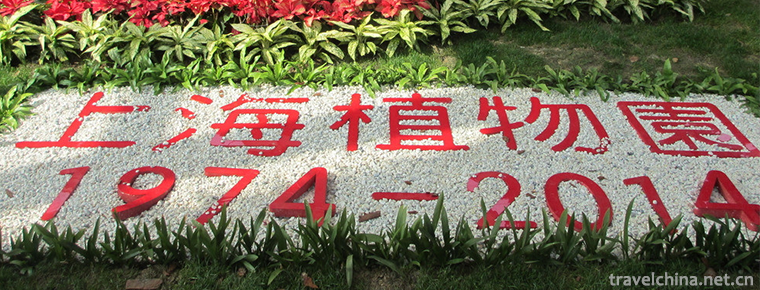
-
Baishishan Scenic Area Baoding City Hebei Province
Baishishan Scenic Area, also known as Baishishan National Geological Park, is called "Xiaohuangshan" because its scenery resembles the Huangshan Mountain in Anhui Province..
Views: 252 Time 2018-11-24 -
Chinese Elk Garden Scenic Spot
Jiangsu Dafeng Elk National Nature Reserve is located in the Yellow Sea coast, with a total area of 78,000 hectares, including 2668 hectares in the core area.
Views: 148 Time 2018-12-06 -
Dayan Pagoda Datang Furong Garden Scenic Area
The Furong Garden of the Tang Dynasty is located in Qujiang Development Zone in the south of Xi'an City, Shaanxi Province, on the southeast side of the Big Wild Goose Pagoda..
Views: 161 Time 2018-12-12 -
Daweishan National Forest Park
Dawei Mountain is located in the boundary between Hunan and Jiangxi Province, the hinterland of Lianyun Mountains, the East is Tonggu County under the jurisdiction of Yichun City, Jiangxi Province.
Views: 125 Time 2019-01-07 -
Langzhong Tiangong Courtyard Fengshui Cultural Scenic Area
Tiangongyuan Fengshui Cultural Scenic Area is located in Tiangong Township, southwest of Langzhong City, 29 kilometers away from the urban area, covering an area of more than 10 square kilometers.
Views: 116 Time 2019-01-29 -
Qingdao Yinhai International Yacht Club
Qingdao Yinhai International Yacht Club is located at No. 30 Donghai Middle Road, Qingdao City. It is the first national AAAA class tourist attraction in China with yacht club as its main body..
Views: 117 Time 2019-02-07 -
GUI Opera
Gui Opera (commonly known as Gui Opera or Gui Ban Opera), Guangxi local traditional drama, one of the national intangible cultural heritage..
Views: 163 Time 2019-05-02 -
Shaoxing Lotus Flower Fall
Shaoxing Lotus Fall, also known as Lotus Music and Lotus Fall, is a traditional form of folk art in Shaoxing, Zhejiang Province. It is named because of the help singing such as "Lili Lianhua Luo&.
Views: 136 Time 2019-06-14 -
Tu Wedding
The custom of Tu people's wedding in Huzhu Tu area has a long history. Tu people's wedding custom is gradually formed and developed through the struggle with nature and the long-term practice of produ.
Views: 285 Time 2019-06-23 -
History of Leshan
Leshan used to be the capital of Kaiming tribe in ancient Shu state. In 309 B.C., King Wu of Qin sent troops to the south to wipe out the rule of the Kaiming family. The state of Qin established Nan'an County in Shizhong District of Leshan City.
Views: 133 Time 2020-12-17

